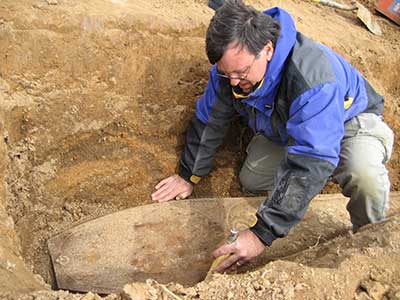Historic documents research, together with analysis of the artifacts found with those buried within the Terrill Cemetery, indicated that these individuals most likely died sometime between 1830 and 1876. Eight were adults and 10 were infants or children 12 years and younger. The large number of infants and children reflects the high child mortality rates of the nineteenth century. These high rates are often attributed to poor nutrition, poor sanitation, a lack of medical knowledge concerning common diseases, and a lack of antibiotics.
Almost all of the individuals were arranged in one of three rows. Heads were oriented toward the west.
The exceptions were Burial 1 (a young adolescent), Burial 2 (an infant/child), and Burial 21 (an infant). These individuals were buried in the southernmost portion of the cemetery. Along with their spatial separation, these graves were oriented differently: heads pointed to the northwest. These differences could indicate that these people were not family members. They may have been the children of household employees or the enslaved.
Everyone was buried in a coffin. Over the course of the cemetery's use, coffin hardware became more elaborate. Viewing plates and decorative handles became more common.
One individual was buried in a torpedo-shaped, cast-iron coffin decorated with floral designs. The elaborate features of this coffin suggested that it held a person of means.
